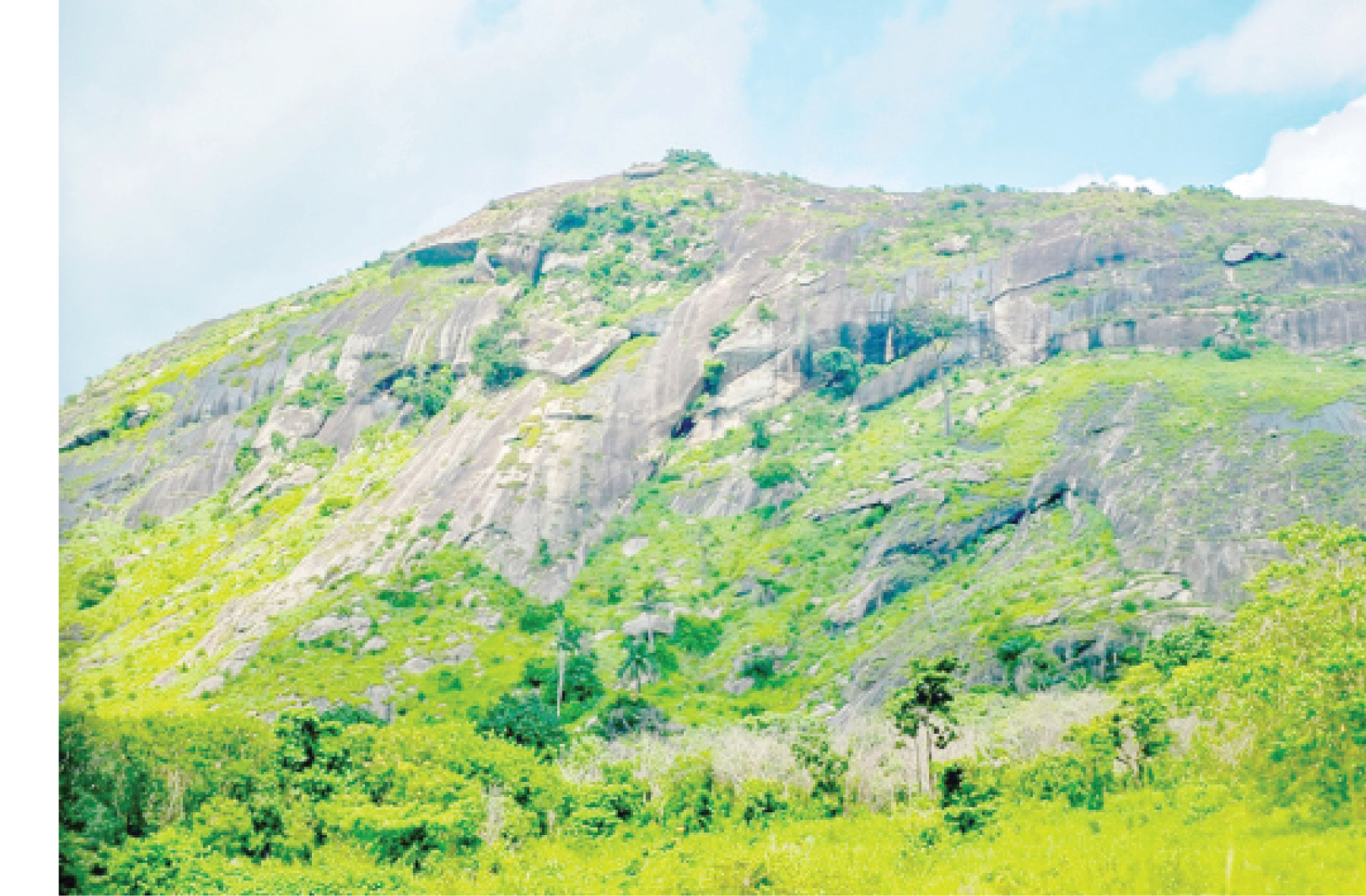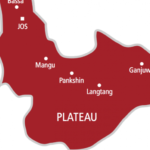In Igbo land, some cultures and traditions are almost going into extinction due to the spread of Christianity. But some communities are making efforts to revive theirs. Daily Trust on Sunday writes on the culture and tradition of one of the communities in the South East and how the people are making efforts to keep their heritage alive.
By Chukwu Eze Romeo
Ugwulangwu community, also known as Ezeokechima, is located in Ohaozara Local Government Area of Ebonyi State. This community, which has existed for over 100 years, is made up of several villages, including Amata, Uhuotaru, Mgbom, Ufuezeraku, Anene, Anenu, Ufuovoke and others.
The Aju cultural festival, which was handed over to the indigenes by their forefathers, is held every year. It is a period of communion and communication with the people’s gods and ancestors. It also marks the end of the people’s traditional calendar year and the beginning of another.

But over time, due to the advent and spread of Christianity in the community, the festival started losing popularity and acceptance, especially among the younger generations, who saw its activities as fetish. However, recently, concerned indigenes met and agreed to revive their cultural heritage, which was almost going into extinction.
To announce the exact days of the festival, elders count months through the means of moonlight.
Traditionally, the people count months and weeks, as well as important events through market days and new moons. As a result of this, moonlights are usually celebrated among the people as new months are ushered in.
Elders use the new moons to determine the equivalent month in the Gregorian calendar; hence even those without western education are able to calculate the number of months that make up a year. For the young ones, it is an opportunity for celebrations at night at different playgrounds.
As the moonlight brightens the night in the absence of electricity, folktales and opportunities for traditional dancing increase. It also reduces crime.
The names of the months are derived from the activities and festivals that take place at the time. The following are some of them and important events marked during the months:
Some of the months, which are attached to traditional events, include Onwa Aju, Onwa Nta, Onwa Ukoro, Onwa Aju Ogirinya, Onwa Efhuna. Others are Onwa Inyima, Onwa Amoha, Onwa Nnamikgwu, Onwa Nja-Oba, Onwa Ji Eze. Also, Onwa Ji Ofhu, Onwa Nzogbu N’okpa, Onwa Abanifhi and Onwa Nta Achiegwu.
Onwa Aju
This is the month of the Aju festival, which is usually between August and September. It is used to mark the end and beginning of a new year.
Onwa Nta
This period of hunting (between September and October) brings the people together after the Aju festival. During this period, professional hunters and amateurs converge to show their skills.

Onwa Ukoro
Ukoro is located at Aja Mgbom, one of the villages in Ezeokechima. The event at Ukoro is usually observed between October and November.
The occasion is used to commemorate victorious wars and demonstrate valour and kinetic skills. During the celebration, there are usually several stages of dancing, wrestling and karete games, including a breathtaking spectacle that usually occurs on the Ogo-Aja, the hill where able-bodied youths mount to demonstrate strength.
Onwa Aju Ogirinya
In this traditional month (November and December), people who married newly will pay visit to their in-laws with 24 tubers of yam, palm wine and a lap of slaughtered goat to show appreciation and indicate that their daughter is in a safe hand.
Onwa Efhuna
The Efhuna shrine is located at Ndiunuhu Ufuezeraku, one of the villages that make up the community. The shrine is dedicated to the god of harmattan. Only the people of this village take part in its mini festival in December.
Onwa Inyima
Inyima is a shrine situated at Amene, also one of the villages in Ugwulangwu. The people of Amene worship in this shrine, which is seen as their savior during inter- communal wars. Any child born during that period is usually named after the god of Inyima. That is why many people from this village bear the name, Inyima. Sacrifice for protection in this shrine is always done in January.
Onwa Amoha
Amoha is a sacrificial feast usually performed in April when planted yams begin to develop new tubers. During this feast, prayers are offered to the god of the earth with cocks and colanuts at Enya-ani Ugwulangwu (the people’s ancestral land).
Amoha is a festival to drive away the spirit of famine in the community. At this time, every man is expected to celebrate by sacrificing to Njoku ji and Njaoba (the gods of the yam). This is done to ensure a bountiful harvest.
Onwa Nnam Ikegwu
Ugwu Nnam Ikegwu, the symbolic mountain of the community, is situated at Ufuezeraku village, but its shrine is located at Ufuovoke, the people’s ancestral community. One cannot plant or harvest yam in Ugwulangwu if the chief priest of Nnam Ikegwu has not planted or harvested. Before planting yam, the high priest usually consults the gods of the earth for a prosperous farming year. The sacrifice is usually done in May.

Onwa Nja-Oba
This is usually observed in June every year. During this local month, every married man is expected to offer sacrifice with a cock at Nja-oba, while his in-laws are expected to visit with cock, tubers of yam, kola and sizeable dry meat.
Onwa ji Eze
This month (July) is when every ritual to usher in the new yam will be performed before people can start eating it.
Onwa ji Ofhu (month of new yam)
In this month, which is usually August in the Gregorian calendar, the people are allowed to harvest new yam, from which mothers, mothers-in-law, sisters and fathers will be given some tubers.
Onwa Nzogbu N’okpa
During this month in Ugwulangwu, the people don’t enjoy any feast. It comes between periods of serious farming.
Onwa Achi Egwu
The Achi Egwu shrine is situated in Amata village. During this month of sacrifice for fruitfulness, all able-bodied men are expected to display their hunting skills. It is observed only by the people of Amata. The hunting expedition, which is usually highly competitive, is declared open by the chief priest of the shrine after offering prayers to the ancestors and the god of the land. The first animal caught by any hunter is usually celebrated and offered to the gods. Also, every child in the village born in this month is named after the shrine, thus you find many people bearing the name, Nwachiegwu.
Other cultural events observed in the community as the people prepare for the Aju festival include Ji Eze and Ntagbu Unwu
The Ji Eze ceremony is performed during the farming season, which starts in December. The farm for Ji Eze is situated at Ufuovoke village.
On Afor market day, the people of Ufuovoke will ask for contribution of yam seedlings from the Umuoka, Umuchita and Egbani clans, which make up the village. But Ufuovoke will first go to the barn on Eke day to receive some crops like pumpkin (ugboma), cocoyam, (okoroko), maize and other crops.
For this ceremony/ritual, four large heaps, usually rotational, are made for the ji eze (king’s yam) every year. The farm is cultivated through communal effort. All adult males participate in the cultivation of the heaps. Before the cultivation, the gods of the land are consulted for bumper harvest. The yam seedlings are planted the same day the two heaps are made and the farm left for the gods to protect.
No Ugwulangwu person is permitted to plant before the Ji Eze ceremony, which marks the beginning of planting season in the community.
On the fifth day in June, ji eze is harvested, an action that marks the beginning of the new yam festival in the community.
The yam is harvested early in the morning and brought to the chief priest of the Ufuovoke village.
On Afor day at 8pm, the chief priest would move to the farm where the two heaps were made to harvest the yams, in the company of some people, without light. Nobody is expected to see him on his way home, especially women. It is believed that any woman who sees him on his way to the farm that night would suffer barrenness, unless the gods are appeased with sacrifices and rituals.
On return with a wooden long container with tubers of the yam harvested, elders are expected to meet as early 5am to make a joyful noise and applaud the gods of yam. Thereafter, the yam, cocoyam brought home will be moved to the eldest man’s compound, where it will be cooked for people to eat, while the remaining ones are moved to another elderly man’s compound to be kept till next time when it will be needed. After this, palm fronds will be taken to the community’s central market, where it will be hung to announce the arrival of new yam in the community.
On another Nkwo market day, the people will start clearing all the roads that lead to Ogudu Ji Eze, the venue where the new yam is celebrated, amidst traditional wrestling. After that, the yam will be taken to the mountain of Nnam Ikegwu and presented to the people, according to their clans. It is after this ritual that the people are free to eat new yam in Ugwulangwu.
But nobody is permitted to roast new yam till the day of Ntagbu Unwu, which is the beginning of the new yam festival in the community, usually in August; and it must be on Afor market day. Special prayers are said from the early morning of that day.
Ntagbu Unwu has a unique cultural undertone as grains and crops are harvested and eaten in large quantities as most people are inspired to be generous and momentarily wasteful. During this feast, the entire neighbourhood is replete with husks of groundnuts, coconuts and corncobs that invite flies that feast on unwanted waste. The idea, as the name implies, is to chase famine away from the community by eating a lot of food of all kinds.
This year’s Ntagbu Unwu was observed on August 25.
After the day of Ntagbu Unwu comes Oye Aju, the very last market day before the traditional new year of the community. The Aju market day, which is located at Ufuovoke village, is held once in a year. During the market day, every Ugwulangwu child present is expected to visit the market shrine to receive annual blessing from the chief priest.

Basic facts about Aju Ugwulangwu cultural festival
Eight days before the festival, every compound is kept tidy to welcome the living, as well as ancestral spirits.
All quarrels are settled and husbands are forbidden from beating their wives, while burials are prohibited.
There are many cultural festivals in the community, but Aju stands out as it ushers in a new season, rebirth, reawakening and reunion among family members and kindred.
As the month of August gets to its end and the spirits of the people’s ancestors are believed to journey to settle in the world to celebrate with their living descendants, everything is expected to change. During this time, the presence of the ancestors is believed to manifest and felt in some unusual and strange ways.
As a holy season in the community, all forms of hostilities are expected to be suspended. In the olden days, the people were advised not to even move alone, especially in the night, because some sinister spirits (ejo maa) with malevolent motives usually sojourn to the world with benevolent spirits (ezi maa) of the ancestors, to unleash havoc on some innocent humans. That’s why people are advised to avoid quarrels and fights in order not to attract those evil spirits.
This period of celebration is usually mixed with moments of acrimonious scavenging and feasting by both the good and bad spirits on the numerous sacrifices made by their living descendants. While the good ancestors feed at home, their bad counterparts, some of whom were buried in the evil forest (oochu-eja) feast on some crumbs and sacrifices placed in horrifying places like Ochu-Eja and Isi-Ogudu by villagers who had some misfortunes dogging their ways.
Therefore, the construction of the culvert falls within the context of doing good during the period by clearing the pathway leading to one of the most important cultural sites in Ezeokechima, which for no reason deserve to be dogged by any form of controversy.
In this year’s celebration titled, “Putting a spotlight on our culture,” a lot of activities were introduced to make the Aju festival unique, more attractive and acceptable to the people, especially the younger generation, who are mostly Christians.
One on the activities was a procession/carnival from the central market square to the Oye Aju, in the company of the traditional ruler of the community, Eze R F Iyioku and members of his cabinet, including people with various traditional titles.
Also, different musical and dance groups from various villages of the community and beyond, including youths and women, displayed their skills and artistry to make the event very colourful.
The legacy project for this year’s festival was the construction of the culvert leading to the yearly market, through communal effort.

 Join Daily Trust WhatsApp Community For Quick Access To News and Happenings Around You.
Join Daily Trust WhatsApp Community For Quick Access To News and Happenings Around You.


